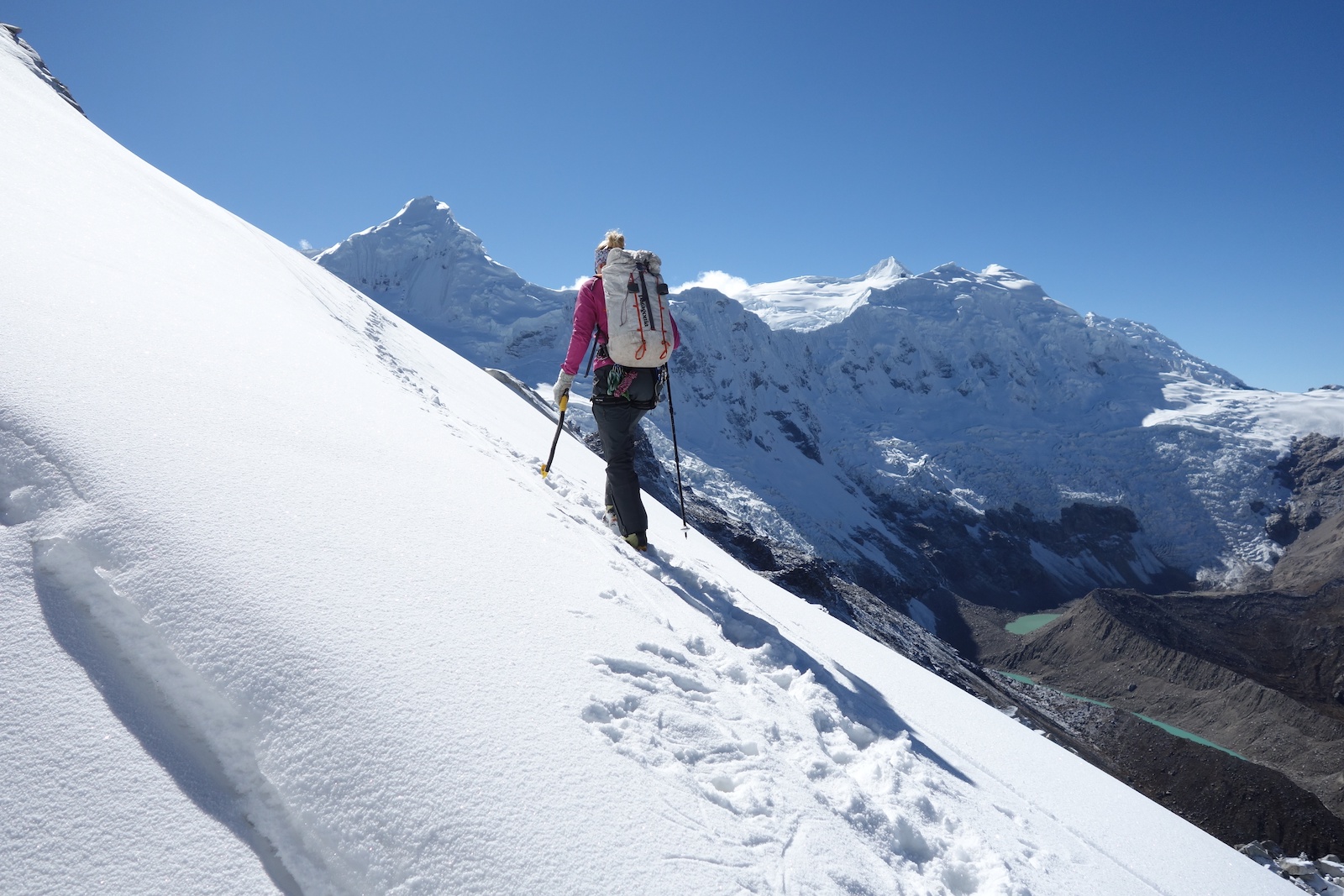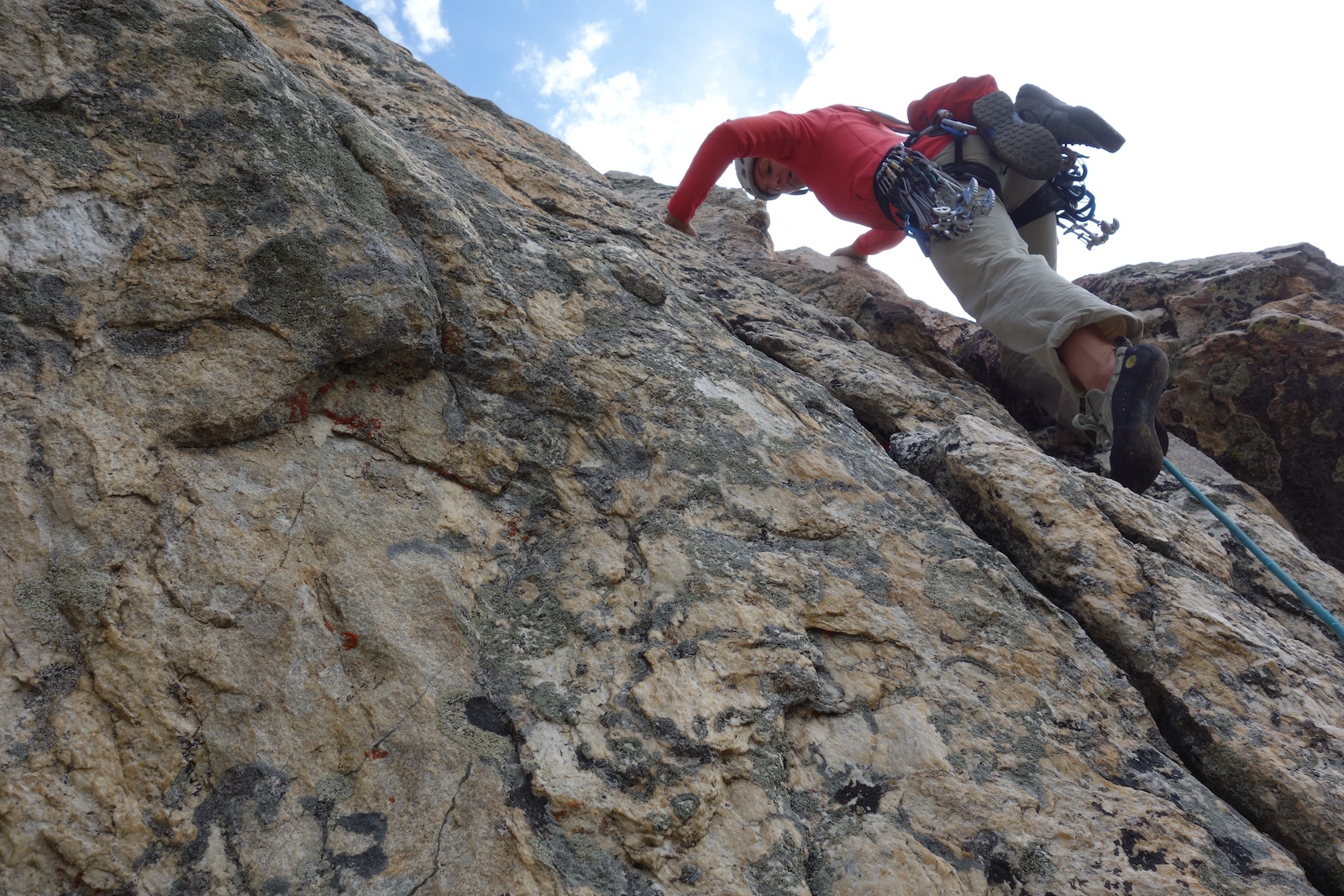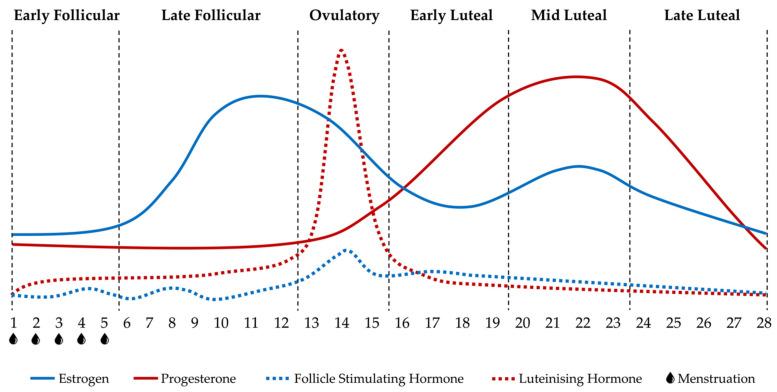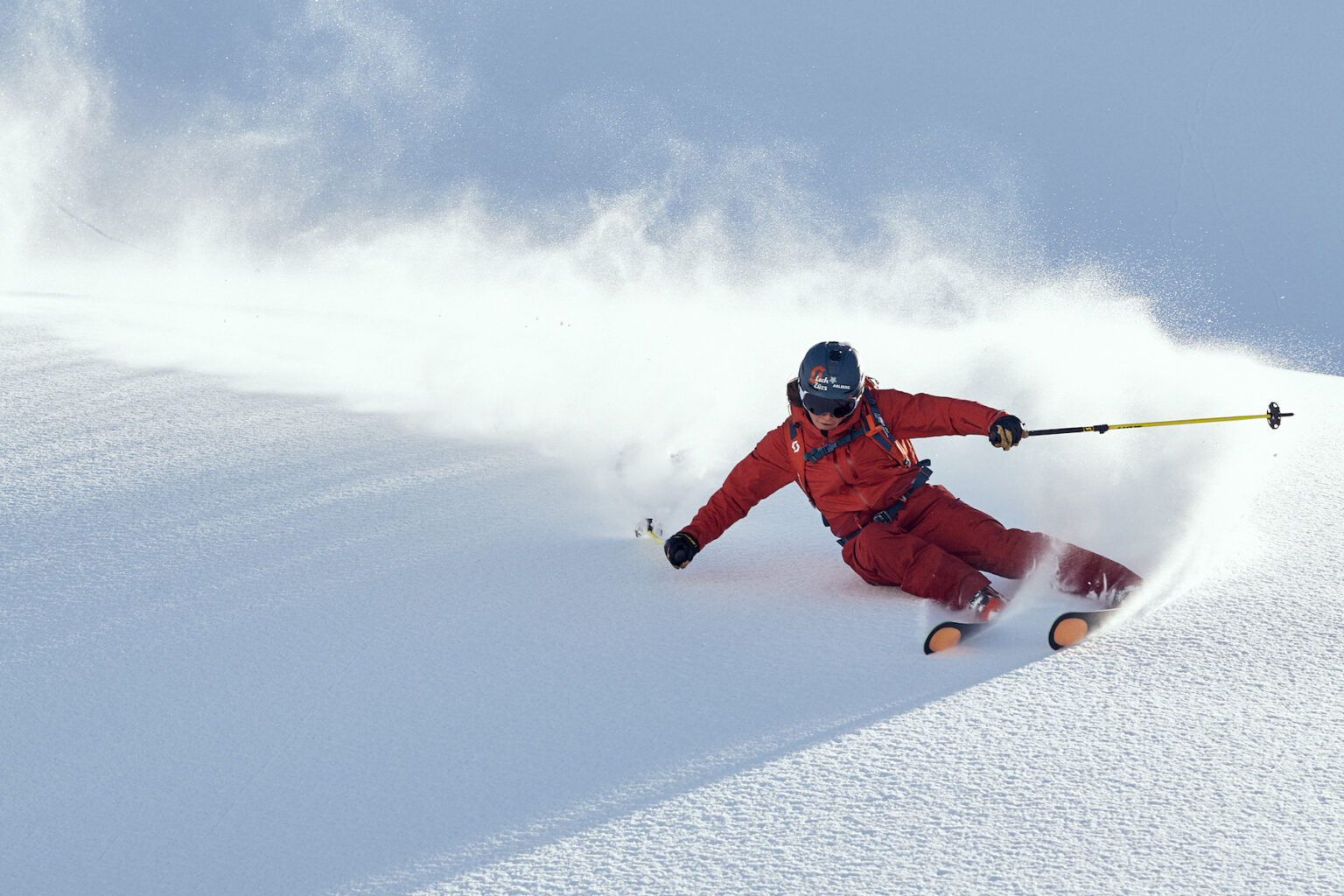It is crucial in all sports to consider the physiology of female athletes, especially their biology and the fundamental mechanisms of their bodies. Mountain sports have a dominant history of male achievements with little focus on the incredible achievements of female athletes. But female athletes in mountain sports have overcome societal hindrances to climb the tallest of mountains, literally and proverbially.
In 1808, at only 18 years of age, French mountaineer Marie Paradis summited Mont Blanc in the first recorded female summit. In the 1920s, female athletes started tackling the rock climbing world despite the numerous sexist and discouraging things said about them. Along the way, female athletes have conquered so many incredible athletic feats that were deemed impossible or improper for them to do.
On top of the societal challenges that females had to overcome, female athletes’ physiology is rarely considered, until more recently, in scientific research and training programs. Female athletes have a history of being considered smaller and more delicate. Put pink packaging on a product designed for males, and it will sell to females. Female athletes’ physiology basics are never accounted for while developing their strength and training programs. The same goes for our understanding and consideration of sports. However, this is a dated belief system that needs to be eliminated.
So, how are females unique in their physiology, and how can they use it to their benefit? Let’s explore the entire concept, beginning with the often misunderstood topic of strength for female mountain athletes.

STRENGTH CONSIDERATIONS FOR FEMALE MOUNTAIN ATHLETES
Strength training for female athletes has always been a heavily debated topic. For one, there is a societal view of strength training and the antiquated concept that it will make one look like a bodybuilder. And sure, if you are training specifically for hypertrophy, it can do that. From the mountain athlete’s point of view, strength training is a way to progress and protect our bodies for the sports we love. For female mountain athletes, body image often plays into fears around strength training and even perception of ability. There is a fear of being “too big” and societal pressure to look a certain way. The sexualization of the female athlete’s body by society leads to an internalization of ideal body size and shape. But strength training is about staying healthy, becoming more powerful, getting up to the top of that mountain, and running ultras. Muscles are the power behind getting where you want. Our societal perception of beauty and strength needs to change to reflect that.
For all athletes, strength training protects our ligaments, tendons, joints, and bones as we work on our sport. It also makes us more powerful, faster, and able to endure in the elements for longer. Strength training is even more critical for female athletes as it protects our bones from sports ailments for our unique physiology, such as stress fractures. Stress fractures are more common in female athletes due to the higher percentage of Relative Energy Deficiency in Sport (RED-S). Read more on RED-S below and how it affects female athletes.
How are females and males physiologically different when it comes to strength? Well, a female’s lean muscle mass is distributed differently than a male’s. Females, in general, have stronger lower bodies than their upper bodies. Females tend to store fat around the hips and thighs. In-vitro adipose tissue biopsy data has shown that females display differences in lipolytic activity between upper body and lower body adipose tissue compared to males. Female power comes from hips and legs. Essential fat in females represents between 10-13% of body weight, whereas, in males, it represents only 2-5%. This difference is because female bodies store more fat in anticipation of pregnancy.
Another difference in the physiological makeup of females is muscle size. Females have smaller muscle fibers. On top of that, hormones, specifically testosterone, which is the hormone that helps with the development of muscle mass and strength, are significantly lower. Another point in female strength physiology is that after puberty, females tend to gain strength in their quads faster than their posterior chain (hamstrings, glutes, etc.). It puts female athletes at higher risk of injuries such as ACL and other knee issues due to the imbalance.
So, what does this mean for female athletes? It is only with this understanding we can know how to best train. Understanding these factors, female athletes should inform correct training protocols, such as focusing more on strength training efforts into the posterior chain. Knowledge is power, and female athletes are incredibly potent. Knowing how to utilize their unique physiology empowers female athletes to work with their bodies instead of against them.
When it comes to strength, it is essential to remember that it is integral in becoming the best an athlete can be for their sport. About the fear of muscle mass mentioned at the beginning of this section, there is a commonly held myth, and not necessarily true, that being lighter will always make you faster. You can get faster by working on power and technique. Strong, responsive legs can provide a more powerful foot strike or rebound when running. Strong, powerful arms can drive an ice axe with less effort and more precision. Although there is a difference in muscle physiology between males and females, that doesn’t mean that females can’t be more robust than their male counterparts.

MOBILITY FOR FEMALE UPHILL ATHLETES
Mountain athletes require a ton of mobility. In rock climbing, pulling hard from difficult positions to running technical descents, mobility makes mountain athletes flow and move efficiently. Most female athletes can use mobility and joint health to their favor. Though, we must also address the negatives regarding mobility.
Females have the benefit of a larger Q-Angle. The Q angle is a measurement of the angle between the quadriceps muscles and the patella tendon. This leads to females often being more knock-kneed or pronated. This is another reason females tend to have higher knee injury rates. A startling statistic is that females are 3 to 6 times more likely than males to have injuries to the anterior cruciate ligament (ACL). No need to worry, though, as proper strength training and technical work can mitigate these limitations. This further underlines that female athletes must strengthen their glutes, quads, and hamstrings.
Females also benefit from more mobile joints and ligaments, which leads to a more free range of motion and can lead to more sprain and ligament overuse injuries. This is especially true during pregnancy and post-partum when females produce the hormone Relaxin, designed to help your body stretch and expand. Relaxin does just that; it makes your ligaments loosen up, and we need to be aware that our bodies are susceptible to injuries at these times. New evidence suggests that certain times during a female’s menstrual cycle may also lead to greater ligamentous laxity and a greater risk of ligament injuries in female athletes. Female athletes should use their extra mobility to their benefit as it’s just another way their bodies are designed to help them achieve greatness.

ANAEROBIC AND AEROBIC CONSIDERATIONS FOR FEMALE UPHILL ATHLETES
The anaerobic and aerobic systems are very complex, and the physiology behind how these capacities are trained is largely the same. Please consult for a deep dive into this topic. To fully understand the concept would take up most of this article. For an even deeper discussion on the subject of anaerobic and aerobic pathways, please refer to Chapter 2 in Training for the Uphill Athlete. Here, we will dive into how female athletes can use their unique physiology to make the most of their aerobic and anaerobic training.
Due to the smaller build of females, their lunges and heart are also proportional. This also means that females, generally speaking, have lower VO2 max and higher max heart rates. Although this may seem an overall disadvantage, this kind of physiology has some advantages. Female athletes are more fat-adaptive and have larger endurance (type 1) muscle fibers, giving an advantage in longer events. This means that females use fat and fewer carbohydrates during the aerobic process. One rock climbing study showed that while female muscle fibers were less powerful, they fatigue more slowly than their male counterparts. On top of that, female VO2 max reduces proportionally lesser when climbing at high altitudes. Those seem like some tremendous physiological advantages when it comes to mountain sports.
Glucose and fat are the driving force behind the aerobic and anaerobic systems, and both are necessary components. Insulin is the hormone responsible for carbohydrate and fat metabolism and is essential in the systems mentioned above. Hormones are also a huge factor in every athlete’s health and athletic ability but are a bit more complicated for the female athlete. Let’s explore this in the next section.

HORMONAL HEALTH AND THE ENDOCRINE SYSTEM
Females have a lot going on with hormones, including fluctuation of estrogen, progesterone, and other less dominant hormones that change in our bodies each month as part of the reproductive cycle. The “normal” range for a female menstruation cycle is anywhere from 28 to 31 days. The influence of the menstrual cycle is important for all female athletes to consider in how they train.
Performance can be influenced by a female’s menstrual cycle, depending, of course, on the athlete and how their unique hormones fluctuate. To start this, I want to state that all female athletes are different in this realm, some report competing at their best when on their period, whereas others couldn’t dream of even doing their sport for those few days. We know that hormones and the menstrual cycle dictate muscle activation, thermoregulation, and laxity in ligaments and body composition.
The two main hormones involved in the menstrual cycle are estrogen and progesterone. Estrogen is responsible for neuroexcitability, whereas progesterone inhibits cortical excitability. This difference in hormones creates a change in force production. Estrogen is correlated with higher strength, power, and collagen production. This leads to greater strength gains during training during our cycle, where there is a peak in estrogen (see the graph below). But with the increase in strength also comes laxity of the ligaments, so female athletes need to be aware of the higher risk to tendons and ligaments during this time. Progesterone, on the other hand, is known to have a catabolic effect when it comes to strength production. Progesterone does have an impact on fat loss, but it also increases the core temperature and can lead to aerobic activities feeling more challenging. One study found that VO2 max and endurance were negatively impacted when progesterone was highest. Keep this in mind as we dive into the menstrual cycle more below.
There are three phases of the menstrual cycle. The first one is the follicular phase which is high estrogen and low progesterone. This means the ability to build muscle is higher and female athletes should use this to their advantage to strength train during this time. The luteal phase is high on progesterone, which increases core temperature and metabolism. This is a good time to do low-intensity and focus on recovery. The late luteal phase is the time right before your period. This is where estrogen and progesterone take a dip, and there may be low energy and food cravings. This is the time for female athletes to listen to their bodies and adjust their training needs.

While each athlete responds differently to the changes in their hormones, it is important to keep the training philosophies behind each phase in mind and use them to their advantage around each cycle. Female athletes should track their cycle and symptoms to see how their body responds during the different phases. The information about hormonal increases and decreases can guide them in understanding how and why they are responding to training the way they are. It may give some direction on when to increase and decrease training.
RED-S
Speaking of hormone changes and female athletes, we couldn’t have an article about female athletic physiology without discussing RED-S. RED-S stands for Relative Energy Deficiency in Sport, previously referred to as the female athlete triad. RED-S affects between 22-58% of athletes depending on the sport. This deficiency leads to a plethora of impaired physiological functions, including but not limited to bone resilience, menstrual function, immunity, metabolic rate, protein synthesis, and more. Beyond physiology, there are also severe psychological consequences of RED-S.
Simply put, RED-S is underfueling. More precisely, it is a chronic energy deficiency created by the difference in the dietary energy input vs. the output by the athlete. This leads to an inability to support homeostasis and daily living, let alone athletic pursuits. Previously referred to as the female athlete triad, this deficiency is most common in females but is seen in males as well, thus the need for the name change.
RED-S is a dire situation with consequential health effects. Loss of menstruation is a huge component of this deficiency, and studies have shown that up to 65% of female runners experienced second amenorrhea, which is the loss of three consecutive menstrual cycles (I’m looking at you, ultrarunners!). Bone health is another significant factor in this deficiency. Oestrogen and progesterone help with the uptake and action of calcium in our body.
RED-S causes hormonal imbalance, thus lowering the body’s ability to build bone and protect our bones against things such as stress fractures. This is just the tip of the iceberg of what can happen when an athlete is dealing with Relative Energy Deficiency in Sport.
RED-S affects athletes in all sports, and more so in some sports than others. We know runners are at higher risk, but what about our climbing and mountaineering friends? A recent study found that 77.5% of climbing athletes did not meet the nutritional needs to sustain even a moderate training load. This study also found that with those with energy deficiency, 30% of females had low iron. Low iron can lead to low energy, aerobic capacity, and many more performance-prohibitive effects.
A recent study found that 77.5% of climbing athletes did not meet the nutritional needs to sustain even a moderate training load.
CONCLUSION
This is an exciting time to be a female Uphill Athlete. Knowledge is power, and female athletes are starting to become empowered with research focusing on their unique physiology. Female athletes need to thoroughly understand the fundamentals of training and their uniqueness compared to traditional male-centric endurance and strength training protocols. Curiosity and thinking outside the box to work with the uniqueness of physiology will help female mountain athletes find the best methodology that works for them. I encourage all female athletes to be proud, understand how their bodies function, and work to be their best version through sports or regardless. Uphill Athlete prides itself on evidence-based, deliberate thinking and research-backed coaching, so circle back here often to learn more about female physiology related to mountain sports. If any topics in this article have sparked your interest, delve deeper with free resources on the Uphill Athlete site. You will find many articles and podcasts by the Uphill Athlete team. If you want to join a community or have a specific goal, check out our female-specific training groups or get custom coaching to suit your needs.REFERENCES
- Duckham. R. L., Peirce, N., Meyer, C., Summers, G. D., Cameron, N., & Brooke-Wavell, K. (2012). Risk factors for stress fracture in female endurance athletes: A cross-sectional study. BMJ Open 2(6). Doi: 10.1136/bmjopen-2012-001920
- Karastergiou, K., Smith, S.R., Greenberg, A.S. et al. Sex Differences in Human Adipose Tissues – The Biology of Pear Shape. Biol Sex Differ 3, 13 (2012). Metabolism. Curr Opin Clin Nutr Metab Care. 2001 Nov;4(6):499-502. doi: 10.1097/00075197-200111000-00006. PMID: 11706283. Link Human physique. Harper.
- Kraemer, W. J., Nindl, B. C., Ratamess, N. A., Gotshalk, L. A., Volek, J. S., Fleck, S. J., … & Häkkinen, K. (2004). Changes in Muscle Hypertrophy in Females with Periodized Resistance Training. Medicine & Science in Sports & Exercise, 36(4), 697-708.
- Linnamo V, Pakarinen A, Komi PV, K Maximal Heavy Resistance and Explosive Exercises in Males and Females. J Strength Cond Res. 2005 Aug;19(3):566-71. doi: 10.1519/R-15404.1. PMID: 16095404.
- Handelsman, D. J., Hirschberg, A. L., & Bermon, S. (2018). Circulating Testosterone as the Hormonal Basis of Sex Differences in Athletic Performance. Endocrine reviews, 39(5), 803–829.
- Haizlip, K. M., Harrison, B. C., & Leinwand, L. A. (2015). Sex-based Differences in Skeletal Muscle Kinetics and Fiber-type Composition. Physiology (Bethesda, Md.), 30(1), 30–39.
- Blaak, E., Gender Differences in Fat Metabolism. Curr Opin Clin Nutr Metab Care, 2001. 4(6): p. 499-502.
- Varnes, J. R., Stellefson, M. L., Janelle, C. M., Dorman, S. M., Dodd, V., & Miller, M. D. (2013). A systematic review of studies comparing body image concerns among female college athletes and non-athletes, 1997-2012. Body Image, 10(4). 421-432. https://doi.org/10.1016/j.bodyim.2013.06.001
- Miller, A.E.J., MacDougall, J.D., Tarnopolsky, M.A. et al. Gender Differences in Strength and Muscle Fibre Characteristics. Europ. J. Appl. Physiol. 66, 254–262 (1993).
- THORSTENSSON, A. and CARLSON, H. (1987), Fibre Types in Human Lumbar Back Muscles. Acta Physiologica Scandinavica, 131: 195-202.
- Rylands, L. P., Cheetham, M. A., Crawford, A., & Taylor, N. (2018). Power Performance Characteristics in Male Versus Female Sport Climbers: A Lab Based Study Using an SRM Power Meter. Journal of Exercise Physiology Online, 21(5).
- Quatman-Yates, CC et al. A longitudinal evaluation of maturational effects on lower extremity strength in female adolescent athletes. Pediatr Phys Ther. 2013; 25(3): 271-278
- Reese, N. B. (2002). Joint Range of Motion and MuscleLength Testing. Philadelphia: Saunders.
- Smith, Francis W. M.D., F.R.C.R.*; Smith, Pamela A. B.Sc.† Musculoskeletal Differences Between Males and Females, Sports Medicine and Arthroscopy Review: March 2002 – Volume 10 – Issue 1 – p 98-100
- Shultz, S. J., Sander, T. C., Kirk, S. E., & Perrin, D. H. (2005). Sex Differences in Knee Joint Laxity Change Across the Female Menstrual Cycle. The Journal of Sports Medicine and Physical Fitness, 45(4), 594–603.
- Herzberg SD, Motu’apuaka ML, Lambert W, Fu R, Brady J, Guise JM. The Effect of Menstrual Cycle and Contraceptives on ACL Injuries and Laxity: A Systematic Review and Meta-Analysis. Orthopaedic Journal of Sports Medicine. 2017 Jul 19;5(7):2325967117718781.
- Belanger L, Burt D, Callaghan J, Clifton S, Gleberzon BJ. Anterior cruciate ligament laxity related to the menstrual cycle: an updated systematic review of the literature. J Can Chiropr Assoc. 2013 Mar;57(1):76-86. PMID: 23483028; PMCID: PMC3581006.
- Carroll Collin, The Performance Gap in Sport Can Help Determine Which Movements Were Most Essential to Human Evolution (2019) Frontiers in Physiology volume 10
- Thibault, V., Guillaume, M., Berthelot, G., Helou, N. E., Schaal, K., Quinquis, L., Nassif, H., Tafflet, M., Escolano, S., Hermine, O., & Toussaint, J. F. (2010). Females and Males in Sports Performance: The Gender Gap has not Evolved since 1983. Journal of sports science & medicine, 9(2), 214–223.
- Tracy J. Horton, Michael J. Pagliassotti, Karen Hobbs, and James O. Hill Fuel metabolism in males and Females during and after long-duration exercise (1998) Tracy J. Horton, Michael J. Pagliassotti, Karen Hobbs, and James O. Hill Journal of Applied Physiology 85:5, 1823-1832
- Tara D’Eon and Barry Braun The Roles of Estrogen and Progesterone in Regulating Carbohydrate and Fat Utilization at Rest and during Exercise (2002) Journal of Females’ Health & Gender-Based Medicine 11:3, 225-237
- NYGAARD, E. (1981), Skeletal muscle fibre characteristics in young Females. Acta Physiologica Scandinavica, 112: 299-304.
- Cheuvront, S.N., Carter, R., DeRuisseau, K.C. et al. (2005) Running Performance Differences between Males and Females. Sports Med 35, 1017–1024.
- Bhaumik, G., Dass, D., Lama, H., & Chauhan, S. K. S. (2008). Maximum exercise responses of males and Females mountaineering trainees on induction to high altitude (4350 m) by trekking. Wilderness & environmental medicine, 19(3), 151-156.
- Venables, M. C., Achten, J., & Jeukendrup, A. E. (2005). Determinants of fat oxidation during exercise in healthy males and Females: a cross-sectional study. Journal of applied physiology.
- Tarnopolsky, M.A., Sex differences in exercise metabolism and the role of 17-beta estradiol. Med Sci Sports Exerc, 2008. 40(4): p. 648-54.
- Davis, S.N., et al., Effects of gender on neuroendocrine and metabolic counterregulatory responses to exercise in normal man. J Clin Endocrinol Metab, 2000. 85(1): p. 224-30.
- Rylands, L. P., Cheetham, M. A., Crawford, A., & Taylor, N. (2018). Power Performance Characteristics in Male versus Female Sport Climbers: A Lab Based Study Using an SRM Power Meter. Journal of Exercise Physiology Online, 21(5).
- Mawson, J. T., Braun, B., Rock, P. B., Moore, L. G., Mazzeo, R., & Butterfield, G. E. (2000). Females at altitude: energy requirement at 4,300 m. Journal of Applied Physiology, 88(1), 272-281.
- Warren, M., & Perlroth, N. (2001). The effects of intense exercise on the female reproductive system, Journal of Endocrinology, 170(1), 3-11.
- McNulty K.L., Elliott-Sale K.J., Dolan E., Swinton P.A., Ansdell P., Goodall S., Thomas K., Hicks K.M. The Effects of Menstrual Cycle Phase on Exercise Performance in Eumalesorrheic Females: A Systematic Review and Meta-Analysis. Sports Med. 2020 doi: 10.1007/s40279-020-01319-3.
- Farage M., Neill S., Maclean A. Copy of Physiological Changes during Malesstruation. [(accessed on 9 February 2021)];
- Carmichael, M. A., Thomson, R. L., Moran, L. J., & Wycherley, T. P. (2021). The Impact of Menstrual Cycle Phase on Athletes’ Performance: A Narrative Review. International Journal of environmental research and public health, 18(4), 1667.
- Smith M.J., Adams L.F., Schmidt P.J., Rubinow D.R., Wassermann E.M. Effects of ovarian hormones on human cortical excitability. Ann. Neurol. 2002;51:599–603. doi: 10.1002/ana.10180.
- Kalkhoff RK. Metabolic effects of progesterone. Am J Obstet Gynecol. 1982 Mar 15;142(6 Pt 2):735-8. doi: 10.1016/s0002-9378(16)32480-2. PMID: 7039319.
- Sung E, Han A, Hinrichs T, Vorgerd M, Manchado C, Platen P. Effects of follicular versus luteal phase-based strength training in young Females. Springerplus. 2014 Dec 1;3(1):668.
- Wikström-Frisén L, Boraxbekk CJ, Henriksson-Larsén K. Effects on power, strength and lean body mass of menstrual/oral contraceptive cycle based resistance training. Journal of Sports Medicine and Physical Fitness. 2015.
- Reis E, Frick U, Schmidtbleicher D. Frequency variations of strength training sessions triggered by the phases of the menstrual cycle. International journal of sports medicine. 1995 Nov;16(08):545–50.
- Herzberg SD, Motu’apuaka ML, Lambert W, Fu R, Brady J, Guise JM. The effect of menstrual cycle and contraceptives on ACL injuries and laxity: a systematic review and meta-analysis. Orthopedic journal of sports medicine. 2017 Jul 19;5(7):2325967117718781.
- D’eon, T. and Braun, B., 2002. The roles of estrogen and progesterone in regulating carbohydrate and fat utilization at rest and during exercise. Journal of Females’ health & gender-based medicine, 11(3), pp.225-237.
- Constantini, N.W., Dubnov, G. and Lebrun, C.M., 2005. The menstrual cycle and sports performance. Clinics in sports medicine, 24(2), pp.e51-e82.
- Bandyopadhyay A, Dalui R. Endurance Capacity and Cardiorespiratory Responses in Sedentary Females During Different Phases of Menstrual Cycle. Kathmandu University Medical Journal. 2014;10(4):25-29. doi:10.3126/kumj.v10i4.10990
- Gibson-Smith, E., Storey, R., & Ranchordas, M. (2020). Dietary intake, body composition and iron status in experienced and elite climbers. Frontiers in Nutrition, 7, 122. https://doi.org/10.3389/fnut.2020.00122
- Logue, D. M., Madigan, S. M., Melin, A., Delahunt, E., Heinen, M., Donnell, S. -J. M., & Corish, C. A. (2020). Low energy availability in athletes 2020: An updated narrative review of prevalence, risk, within-day energy balance, knowledge and impact on sports performance. Nutrients, 12(3). https://doi.org/10.3390/nu12030835
- Mountjoy, M., Sundgot-Borgen, J., Burke, L., Carter, S., Constantini, N., Lebrun, C., Meyer, N., Sherman, R., Steffen, K., Budgett, R., & Ljunggyist, A. (2014). The IOC consensus statement beyond the Female Athlete Triad – Relative Energy Deficiency in Sport (RED-S). British Journal of Sports Medicine, 48(7), 491-497. https://doi.org/10.1136/bjsports-2014-093502

